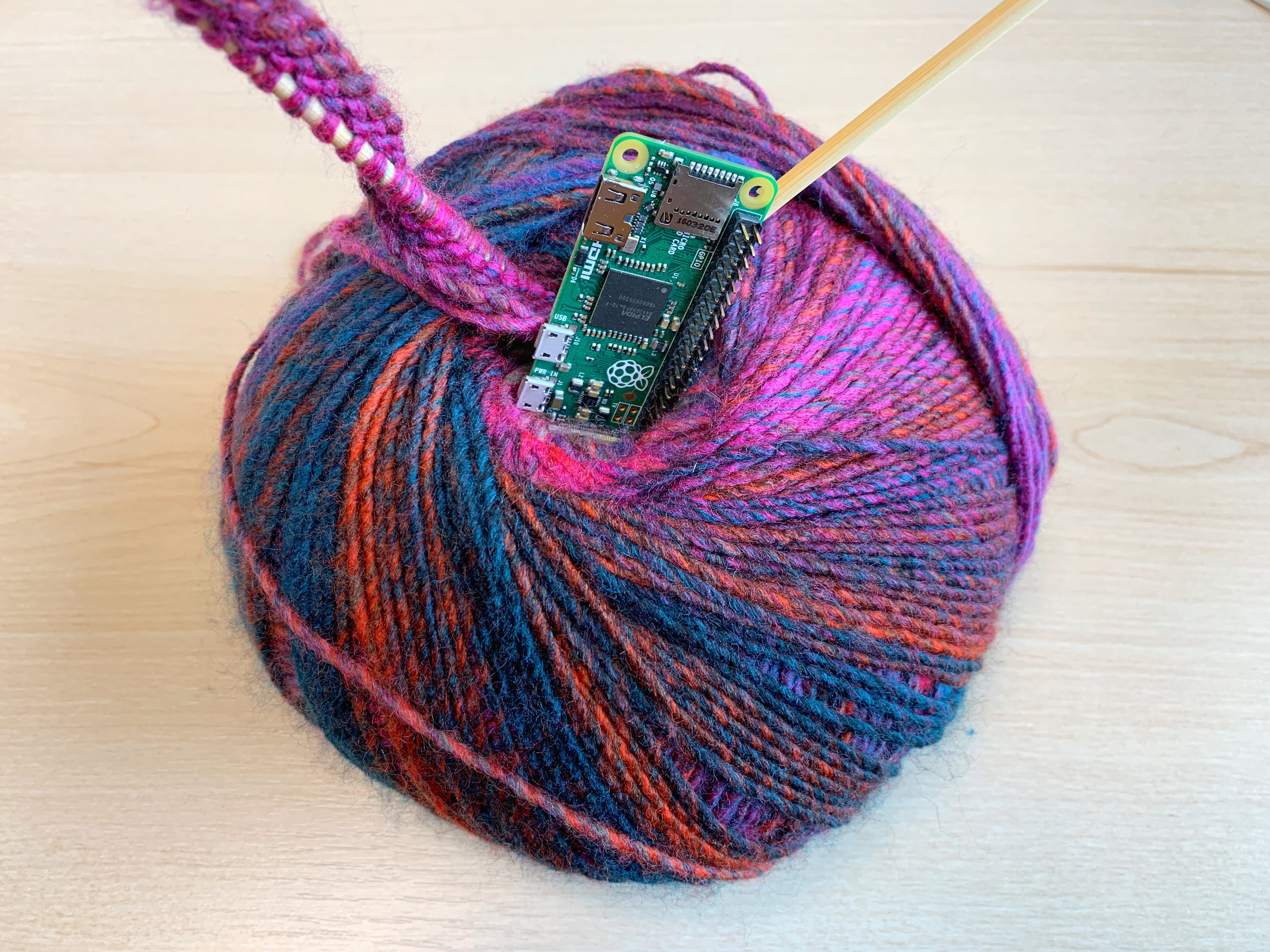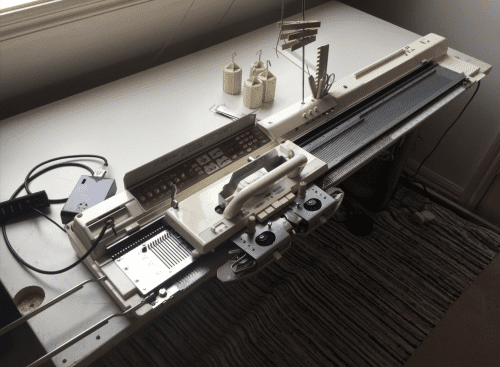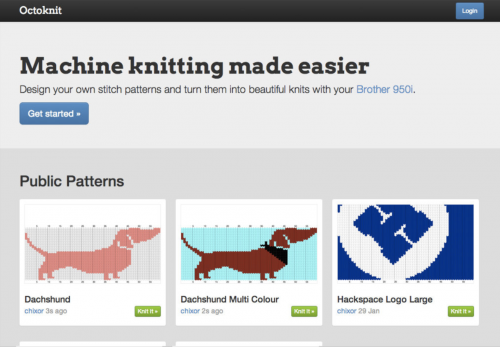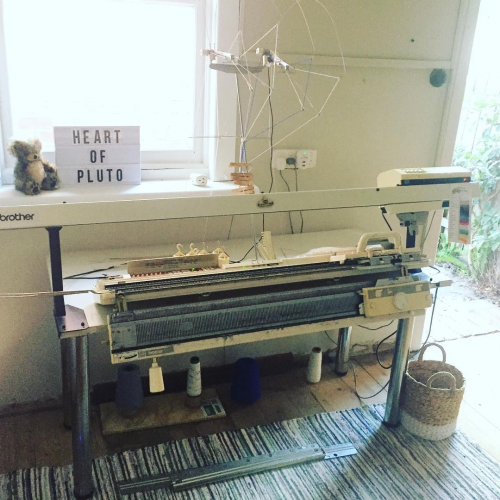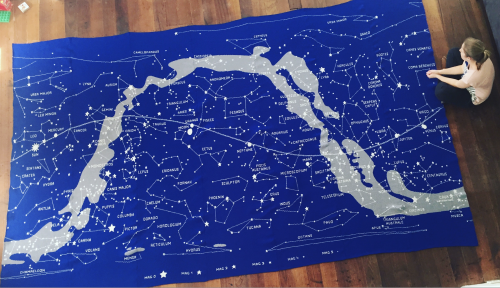I’m currently (re)learning how to knit. Here are some textile-themed Raspberry Pi projects for the yarn-curious.
The Raspberry Pi-powered loom
Loom Operation
The general sequence of events for running my Raspberry Pi controlled loom. The project was really a proof of concept idea rather than an actual production model. This video is intended to supplement my blog at www.photographic-perspectives.com Sorry, there is not audio with this.
//cdn.embedly.com/widgets/platform.js
Fred Hoefler has taken a desktop loom and added a Raspberry Pi to automate it. Read more in our blog post.
Networked knitting machine: not your average knit one, purl one
Knitting Printer! (slowest speed)
Printing a scarf on a Brother KM950i knitting machine from the 1980’s. To do this I have a Brother Motor arm to push the carriage back and forth and a homemade colour changer that automatically selects the colour on the left (the white and purple device with the LED).
//cdn.embedly.com/widgets/platform.js
The moment we saw Sarah Spencer‘s knitted Stargazing tapestry, we knew we needed to know more. A couple of emails later, and here’s Sarah with a guest blog post telling you all you need to know about her hacking adventure with a 1980s knitting machine and a Raspberry Pi.
Raspberry Pi spinning wheel
Hendrix College Raspberry Pi Bake-Off
Uploaded by Hendrix College on 2014-04-08.
//cdn.embedly.com/widgets/platform.js
Cyndi Minister runs The Twisted Purl, a yarn company in Arkansas. She’s also a bit of a geek, and when her ankles became sore from too much work at the treadle, she hit on the idea of making a Raspberry Pi-powered spinning wheel for her hand-made yarn. Read more.
Jacquard looms, and a Pi simulator
Loom Computer (Jacquard Simulator)
Raspberry Pi based Jacquard Loom simulator on display at Macclesfield Silk Museum (http://http://www.silkmacclesfield.org.uk).
//cdn.embedly.com/widgets/platform.js
Next time you’re out shopping for curtain fabric, or buying intricately woven cushion covers, step back for a moment and think about the computing history you’re holding in your hands. Computing’s everywhere. Find out more here.
The post Fabric-licious Raspberry Pi projects appeared first on Raspberry Pi.
Website: LINK
